Today, Kid Lit Reviews is pleased to welcome a young man with either a wildly creative imagination or one of the most interesting best friends a boy can have by his side. We’ll call him “Big Brother” since his newest story centers around the addition of a new family member in the form of a …![]()
Viewing: Blog Posts Tagged with: imaginary friends, Most Recent at Top [Help]
Results 1 - 11 of 11
Blog: Kid Lit Reviews (Login to Add to MyJacketFlap)
JacketFlap tags: Shari Dash Greenspan, When a Dragon Moves In Again, Children's Books, Interviews, Picture Book, siblings, Favorites, dragons, Series, Books for Boys, new baby, Flashlight Press, imaginary friends, Jodi Moore, Howard McWilliam, Add a tag
Blog: Kid Lit Reviews (Login to Add to MyJacketFlap)
JacketFlap tags: Children's Books, Picture Book, friendship, acceptance, Favorites, Chronicle Books, ghosts, imaginary friends, Mac Barnett, Christian Robinson, New York Times Bestselling author, misunderstandings, Library Donated Books, 6 Stars TOP BOOK, classic illustrations, Top 10 of 2015, acclaimed, award-winning illustration, Leo: A Ghost Story, reading as an adventure, Add a tag

Leo: A Ghost Story
Written by Mac Barnett
Illustrated by Christian Robinson
Chronicle Books 8/25/2015
978-1-4521-3156-6
52 pages Age 3—5
“Most people cannot see ghosts. Can you?
“You would like being friends with Leo. He likes to draw, he makes delicious snacks, and most people can’t even see him. Because Leo is also a ghost. When a new family moves into his home and Leo’s efforts to welcome them are misunderstood, Leo decides it is time to leave and see the world. That is how he meets Jane, a kid with a tremendous imagination and an open position for a worthy knight. That is how Leo and Jane become friends. And that is when their adventures begin.” [press release]
Review
Leo has lived alone in his house for some time as evidenced by his attire. He spends the time amusing himself with his drawings and taking adventures through the books he reads. Then, much to Leo’s delight, a family moves in, but when Leo tries to welcome them with mint tea and honey toast the family runs into the bathroom, locks the door, and considers their options. The young boy defiantly states,
“I hate tea! And I hate ghosts!”
(I suppose in their fright they forget a locked door won’t keep out a ghost, and it doesn’t.) Leo is floating above the tub. He hears the young boy’s words and decides it is time to leave his home and explore the world. But no one can see Leo. Worse, they walk right through him as he stands on the sidewalk.
 Fortunes take a good turn the day Leo meets Jane. Jane is in need of a knight and thinks Leo will fit the bill. King Jane is introducing the new Sir Leo to her royal court—all imaginary friends. Leo is disappointed Jane thinks he is imaginary, rather than real, but Leo does not want to risk scaring Jane with the truth. That night, Leo moves into the living room just in time to see a burglar climbing through the window. The thief does not see Leo, walking right through the young ghost. Leo is not deterred. He finds a way to capture the thief and prove to Jane he is more than imaginary.
Fortunes take a good turn the day Leo meets Jane. Jane is in need of a knight and thinks Leo will fit the bill. King Jane is introducing the new Sir Leo to her royal court—all imaginary friends. Leo is disappointed Jane thinks he is imaginary, rather than real, but Leo does not want to risk scaring Jane with the truth. That night, Leo moves into the living room just in time to see a burglar climbing through the window. The thief does not see Leo, walking right through the young ghost. Leo is not deterred. He finds a way to capture the thief and prove to Jane he is more than imaginary.
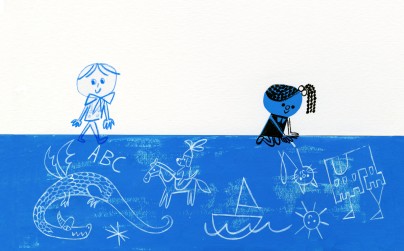 Leo: A Ghost Story begins to impress right from the cover. Underneath an inviting book jacket is a classy blue cover with Sir Leo’s shield. The spine simply says, “LEO.” The acrylic painted cut-out construction paper illustrations are shades of blue and blue-grey, and if you look closely—if you contain the imagination—you can see Leo in nearly every spread.
Leo: A Ghost Story begins to impress right from the cover. Underneath an inviting book jacket is a classy blue cover with Sir Leo’s shield. The spine simply says, “LEO.” The acrylic painted cut-out construction paper illustrations are shades of blue and blue-grey, and if you look closely—if you contain the imagination—you can see Leo in nearly every spread.
 Those without the needed childlike imagination get a chance to see Leo on the occasions he chooses to reveal himself. I love that Leo draws and reads books. An adventure awaiting in books is a terrific message to send young children. I also love that Leo and Jane become friends, showing children that friendship does not need to be conventional, just accepting of differences. Leo is a great friend and an inspiring example for young children, as is Jane. I love Jane’s unquestioning acceptance of Leo, the ghost. When Leo tells Jane he is a ghost and her real friend, Jane replies,
Those without the needed childlike imagination get a chance to see Leo on the occasions he chooses to reveal himself. I love that Leo draws and reads books. An adventure awaiting in books is a terrific message to send young children. I also love that Leo and Jane become friends, showing children that friendship does not need to be conventional, just accepting of differences. Leo is a great friend and an inspiring example for young children, as is Jane. I love Jane’s unquestioning acceptance of Leo, the ghost. When Leo tells Jane he is a ghost and her real friend, Jane replies,
“Oh! Well that’s even better.”
Young children will adore Leo and enjoy his friendship with “King” Jane. Many will commiserate with Leo when his “new family” misunderstands his intentions. What young child has not had something they meant one way been taken the other way? What adult, for that matter. Accepting others despite their differences is a good message and very appropriate for today’s world.
The press release for Leo: A Ghost Story states that Leo is a “charming tale of friendship . . . destined to become a modern classic that will delight readers for years to come.” After reading the story and enjoying the illustrations, it is difficult to disagree. Leo is a charming little ghost who easily captures the reader’s heart.
LEO: A GHOST STORY. Text copyright © 2015 by Mac Barnett. Illustrations copyright © 2015 by Christian Robinson. Reproduced by permission of the publisher, Mighty Media Kids, an imprint of Chronicle Books, San Francisco, CA.
Buy Leo: A Ghost Story at Amazon—Book Depository—IndieBound Books—Chronicle Books.
Learn more about Leo: A Ghost Story HERE.
An Activity Kit with Discussion Guide can be found HERE.
Meet the author, Mac Barnett, at his website: http://www.macbarnett.com/
Meet the illustrator, Christian Robinson, at his website: http://theartoffun.com/
Find more interesting picture books at the Chronicle Books website: http://www.chroniclebooks.com/
AWARDS
Starred review Kirkus
Starred review Publisher’s Weekly
Junior Library Guild Selection
.
ALSO BY MAC BARNETT
Extra Yarn (Caldecott Honor Book)
Sam & Dave Dig a Hole (reviewed here)
Telephone
ALSO BY CHRISTIAN ROBINSON
Josephine: The Dazzling Life of Josephine Baker (Multi-Award-Winning Book) (reviewed here)
Copyright © 2015 by Sue Morris/Kid Lit Reviews. All Rights Reserved
Full Disclosure: Leo: A Ghost Story, by Mac Barnett & Christian Robinson, and received from Publisher, is in exchange NOT for a positive review, but for an HONEST review. The opinions expressed are my own and no one else’s. I am disclosing this in accordance with the Federal Trade Commission’s 16 CFR, Part 255: “Guides Concerning the Use of Endorsements and Testimonials in Advertising.”
Filed under: 6 Stars TOP BOOK, Children's Books, Favorites, Library Donated Books, Picture Book, Top 10 of 2015 Tagged: acceptance, acclaimed, award-winning illustration, Christian Robinson, Chronicle Books, classic illustrations, friendship, ghosts, imaginary friends, Leo: A Ghost Story, Mac Barnett, misunderstandings, New York Times Bestselling author, reading as an adventure
Blog: Kid Lit Reviews (Login to Add to MyJacketFlap)
JacketFlap tags: Children's Books, creativity, Picture Book, friendship, imagination, Favorites, Books for Boys, FRED, Debut Author, loneliness, imaginary friends, adult picture books, Library Donated Books, Peter Pauper Press, 6 Stars TOP BOOK, Debut Illustrator, Top 10 of 2015, FRED by Kaila Eunhye Seo, Kaila Eunhye Seo, losing child-like qualities, Add a tag
Welcome to TGIF
Thank Goodness It’s FRED!
x
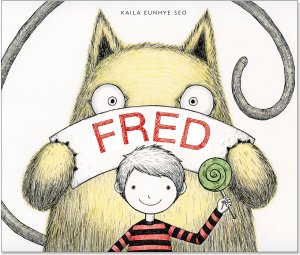 X
X
X
x
FRED
Written by Kaila Eunhye Seo
Illustrated by Kaila Eunhye Seo
Peter Pauper Press 5/01/20`15
978-1-4413-1731-5
40 pages Age 4—8
X
X
“Fred’s world is filled with fantastical friends that make
his days so much fun he hardly notices that no one else can see them. But one day Fred goes off to school, and things start to change. As Fred grows up, his childhood friends slowly fade away and seem to disappear, taking some of life’s sparkle with them. But a chance meeting with a special young girl reminds Fred—and readers young and old alike—that magic and wonder never really disappear . . . they live forever in our hearts.” [book jacket]
Review
Fred’s imaginary friends have the people in his small town thinking he is different—a polite way of saying the boy is odd. Fred has the ability to see and hear things other people cannot. Fred also believes in things the other townsfolk either cannot, or simply will not, believe. Despite the townsfolk’s’ inability to see, hear, or care about Fred’s creatures, the creatures cared about the townsfolk.
“Sometimes they acted like the wind and moved branches out of the way for people.
And sometimes they acted like shade and kept people cool on hot summer days”
What is Fred seeing and hearing that make the others consider the young boy an oddity? Fred sees creatures . . . imaginary creatures . . . imaginary friends. He never cares about making other friends—he already has the best friends a young boy could hope to have.
When the day arrives for Fred to begin school, he makes new friends . . . real, alive friends. His imaginary friends wait, no longer part of Fred’s day. One day becomes two, then three, and each school year blends into the next. One-by-one the creatures Fred adored disappear, losing their color, and fading into the background. By the time he reaches adulthood, all the imaginary creatures are lost from Fred’s memory.
The real world takes too much of Fred’s attention and time. Fred’s days run together as he does the same things day after day. This monotony leaves Fred feeling empty, friendless, and all alone, even in the park where he played so joyfully with . . . with . . . he doesn’t remember with whom he played with, or even what his playmates look liked. Where did his childhood friends go?
FRED will have you wondering when your imaginary friends left you. When these old friends leave, they take with them a very precious commodity: your imagination. Can you imagine doing anything other than your daily routine? Not just a dream vacation, but something that will cheer you up, daily make you implausibly happy, and has the synapses on the right-side of your brain sizzling with ideas, as they jump from neuron to neuron. Neither can Fred, poor guy. Then he gets lucky. A small child comes to the park while Fred sits reading—always a delightful detail in a children’s book. The young girl, with a pocket full of lollipops, asks Fred if he and his friends would like a lollipop. His friends anxiously watch Fred, who says,
“Excuse me?”
Someone can see his friends. They are all still with him. A synapse POPS! Another SIZZLES! Fred’s heart no longer feels weighed down, and instead, he feels free. Fred’s imaginary friends—and his imagination—return. Adult Fred finally realizes he . . . wait, I cannot tell you what Fred realized. Fred would like to tell you himself. This is his story. FRED surprised me, in a very wonderful way. Imagination, and the magical journeys it can create, is not the sole domain of childhood, but we tell ourselves there is no time for such “silliness,” yet without retaining our child-like selves, we lose much of our creativity.
I love Ms. Seo’s direct lines in the pen and ink illustrations. Each spread overflows with artistic detail and the color remains only with the story and its characters. I think Ms. Seo’s attention to detail and using color to focus readers’ eyes on the story shows she cares about making a terrific sensory experience for children. The monsters are hilarious and kid-friendly. Not one creature will cause nightmares, as none is even a wee-bit scary. They walk among the unsuspecting—and unbelieving—in town without any commotion. I do wonder how the non-believers (who possess little to no imagination), would think if they saw what Fred could see. The story and all the eye-catching illustrations are a definite sign that this debut author/illustrator has not lost her childhood imagination, inspiration, or her imaginary friends.
FRED. Text copyright © 2015 by Kaila Eunhye Seo. Illustrations copyright © 2015 by Kaila Eunhye Seo. Reproduced by permission of the publisher, Peter Pauper Press, White Plains, NY.
Purchase FRED at Amazon—Book Depository—Peter Pauper Press.
Learn more about FRED HERE.
TEACHERS: Common Core Teaching Guide for FRED.
Meet the author/illustrator, Kaila Eunhye Seo, at her website: http://www.eunhyeseo.com/
Find more picture books at the Peter Pauper Press website: http://www.peterpauper.com/
**NOTE: Through the month of May, 20% off at Peter Pauper Press. Use Code: MAY 20
Review Section: word count = 663
Huntington Press Best Picture Books 2015
Copyright © 2015 by Sue Morris/Kid Lit Reviews. All Rights Reserved
x
MEGA FRED FRIDAY GIVEAWAY from May 1st – May 29th
Set of all TEN of our Critically Acclaimed Picture Books
For a Chance to WIN Click the Rafflecopter Link Below
Fred by Kaila Eunhye Seo
An EARLY COPY of
All the Lost Things by Kelly Canby
Elephantastic by Michael Engler
The Zoo Is Closed Today! by Evelyn Beilenson
Simpson’s Sheep Won’t Go to Sleep! by Bruce Arant
Hank Finds an Egg by Rebecca Dudley
Hank Has a Dream by Rebecca Dudley
Celia by Cristelle Vallat
Not the Quitting Kind by Sarra J. Roth
Digby Differs by Miriam Koch!
For a Chance to WIN Click the Rafflecopter Link Below
WAIT . . . THERE’S MORE!
Kid Lit Reviews is giving away ONE copy of FRED
To ENTER Just Leave a COMMENT Below
Filed under: 6 Stars TOP BOOK, Books for Boys, Children's Books, Debut Author, Debut Illustrator, Favorites, Library Donated Books, Picture Book, Top 10 of 2015 Tagged: adult picture books, creativity, FRED, FRED by Kaila Eunhye Seo, friendship, imaginary friends, imagination, Kaila Eunhye Seo, loneliness, losing child-like qualities, Peter Pauper Press
Blog: Kurtis Scaletta (Login to Add to MyJacketFlap)
JacketFlap tags: invisibility, imaginary friends, beekle, santat, Miscellaneous, parenting, Add a tag
First came Biggy and Buggy, who were ants. Then came Fuzzypants the tiger. Now there is Robot Doggy and Pirate Puppy.

Pirate Puppy is an invisible dog. And he likes to eat cake and strawberries and today is his birthday.
When we were opening invisible presents Pirate Puppy jumped out of one and he had a pirate hat so I knew he was a pirate puppy.
We don’t know where he lives. His job is fighting off bad guys. His job is fighting off pirates. He’s a pirate too but he is a good guy.
With his menagerie of invisible pals, I wondered how Byron would respond this year’s Caldecott Medal winner, Dan Santat’s The Adventures of Beekle The Unimaginary Friend (aka Beekle). The premise and execution are more visual than a description would do justice, but in a nutshell, Beekle is an imaginary friend waiting, and then searching, for his child.
 Cute, I thought, but I wondered if Byron would be confused or upset by the use of the word “imaginary.” His invisible friends are real (just ask him) and he gets upset if you use that word.
Cute, I thought, but I wondered if Byron would be confused or upset by the use of the word “imaginary.” His invisible friends are real (just ask him) and he gets upset if you use that word.
He sat riveted and delighted through all of Beekle, loving the illustrations and giving it good reviews (“That was funny. Read it again.”), but he did want to discuss it. Why were these friends called imaginary? Why were they visible?
I finally solved this problem by saying Beekle and the other invisible friends were shown as visible in the picture book so it wouldn’t be a bunch of blank pages. Artists can do whatever they want, I said. They can make invisible things visible. They show how things would look if we could see them. And I told him “imaginary” was not always the opposite of “real.”
 Byron’s invisible friends are more than make-believe companions. They allow him to improvise stories, to express his moral leanings, to negotiate reality with others. I don’t think they’re inspired, essentially, by being lonely. They’re more complicated than that and multifaceted, involving Byron’s sense of self and the world.
Byron’s invisible friends are more than make-believe companions. They allow him to improvise stories, to express his moral leanings, to negotiate reality with others. I don’t think they’re inspired, essentially, by being lonely. They’re more complicated than that and multifaceted, involving Byron’s sense of self and the world.
I think the whole thing is pretty fascinating and wish I had an invisible friend of my own.
Filed under: Miscellaneous Tagged: beekle, imaginary friends, invisibility, parenting, santat
Blog: Kid Lit Reviews (Login to Add to MyJacketFlap)
JacketFlap tags: Middle Grade, Series, Books for Boys, Debut Author, Disney-Hyperion Books, summer camps, imaginary friends, Disney Book Group, Library Donated Books, 6 Stars TOP BOOK, Top 10 of 2014, children book reviews, Clay McLeod Chapman, mental health in teens and kids, midde school, troubled boys, Add a tag
by Clay McLeod Chapman
Disney-Hyperion Books 4/22/2014
978-1-4231-5222-4
Age 8 to 12 322 pages
.
“Since being expelled from giving the Greenfield Middle School student body an “explosive” case of food poisoning and sent to live with his father, Spencer Pendleton hasn’t exactly been doing his best to put the past behind him and settle into his new life. What with losing the girl-of-his-dreams and gaining a there-but-absentee father, his life still has a few kinks to work out. And when his single-minded quest to track down the Tribe and reunite with Sully lands him at Camp New Leaf, Spencer is convinced things can’t get much worse. WRONG!
“Not only is Camp New Leaf no ordinary camp, but it appears that the Tribe hasn’t laid the past to rest either. And what better place to catch up with an old member—or recruit a few new ones—than a secluded camp for “troubled” boys. With rebellion in the air, Spencer must find a way to stop the Tribe’s plans to put down roots and expand its ranks before someone gets seriously hurt—or worse.”
Opening
“Dear Dad . . . If you’re reading this, that can only can one thing:
A. I’m dead and buried somewhere in the woods surrounding Camp New Leaf, my body now a buffet for maggots,
B. I’ve been arrested and am serving a life sentence for crimes I didn’t commit,
C. Me (and my lungs) are on the run.
“You sold me out.”
The Story
Way back in book 1 Spencer meet a group of kids—the Tribe—living secretly in Greenfield Middle School. Not having read the first book—though I really want to—I only know that the Tribe and Spencer had some outs of sort. I think it may have had to do with Sully, a beautiful girl Spencer fell for but another Tribe member, Peashooter, objected for some reason. The Tribe poisoned lunch at the middle school causing the entire student body to have extreme diarrhea. Spencer was to blame, so said the principal and a judge. They asked him to stop blaming his imaginary friends and take responsibility.
Spencer also went to live with his father, who had never been a real father or held up his end of responsibilities, ducking out because of work whenever he was to do something with or for Spencer. With mom now fed up and unsure what to do with Spencer, Dad gets his turn. He continues to skirt his responsibilities and when he gets tired of Spencer’s antics, enrolls him in Camp New Leaf, a summer camp for troubled boys. Not long after arriving at the camp, where many of the campers were returning campers, Spencer felt watched the way the Tribe watched him at his old school. By nightfall, The Tribe had taken control of Camp New Leaf. Spencer got new quarters outside in a makeshift cage, and the youngest campers ran ram shot around the grounds. The Tribe stopped all medication cold turkey—using it on the camp director and his camp counselors. The no medication adjustment period brought out interesting behaviors. Spencer actually thinks clearer when off the medications he never should have been prescribed.
Soon supplies begin to run out and the boys get tired of the Tribe’s rules and “training.” Anarchy prevails just as the parents arrive for Parent’s Day.
Review
Book 2 can stand on its own, but I would not recommend reading it before reading book 1. I think there is one more book to arrive and I would get these two finished before then, whenever “then” is.
The Tribe is interesting, imaginative, and incredibly spellbinding. Imaginary friends, who are not imaginary, but also never seen by anyone but Spencer, live in the middle school. They recruit Spencer, something breaks the bond, the Tribe retaliates, and Spencer catches blame for a horrendous crime committed by the Tribe sans Spencer. In the process he loses his home, the police keep him on a short leash, and then dad sends Spencer away for the summer to a soft therapy camp disguised as a summer camp. But the Tribe are not far away, having lived the past six months in the woods surrounding the camp, which is at least fifty miles from civilization.
Camp Cannibal grabs you immediately and ties to the story. Pages fly by on their own as your gasp at the horrors, laugh at the inane, and wonder if this whole situation were actually possible. Could a summer camp go berserk? The characters standout, nearly every one of them. One dad wants to know what is going on and you can see him standing there, demanding answers with this confused and angry face. You can feel his frustrations and inner horror at what his child is doing and might possibly have become. The Tribe is a wonderful middle grade novel, but one for older kids with more advanced language comprehension and moral compasses.
If you want a story to grab you from page one, to hold you captive just like those at camp, and then free you with a thud as the ending becomes nothing you thought it would, The Tribe is your cup of spiked tea. The ending is shocking, surprising, and most definitely heartbreaking. By the last word you must, absolutely must, read book 3—if only to find out Spencer’s fate. For now, hold your kids tight, tell them you love them, and be available to them every moment they need you and then when they don’t. Be careful. Believe all imaginary friends are real—until they are not.
THE TRIBE #2: CAMP CANNIBAL. Text copyright © 2014 by Clay McLeod Chapman. Reproduced by permission of the publisher, Disney-Hyperion, New York, NY.
Buy The Tribe #2: Camp Cannibal at Amazon—B&N—Disney-Hyperion—your local bookstore.
.
Learn more about The Tribe trilogy HERE.
Meet the author, Clay McLeod Chapman, at his website: http://claymcleodchapman.com/
Find more books at the Disney-Hyperion website: http://books.disney.com/
an imprint of Disney Book Group
 The Tribe: Homeroom Headhunters
The Tribe: Homeroom Headhunters
All Schools are the same and Spencer Pendleton expects no less from Greenfield Middle. But Spencer hasn’t met them yet-the Tribe, a group of runaway students who secretly own the school. They live off cafeteria food and wield weapons made out of everyday school supplies. Strangely, no one seems to know they exist, except for Spencer. And the group wants him to join their ranks. All he has to do is pass the initiations…and leave his mother and life behind. Can Spencer go through with it? Better yet, what will happen if he says no?.
.
. 
Filed under: 6 Stars TOP BOOK, Books for Boys, Debut Author, Library Donated Books, Middle Grade, Series, Top 10 of 2014 Tagged: children book reviews, Clay McLeod Chapman, Disney Book Group, Disney-Hyperion Books, imaginary friends, mental health in teens and kids, midde school, summer camps, troubled boys
Blog: Design of the Picture Book (Login to Add to MyJacketFlap)
JacketFlap tags: color, little brown, movement, shape, imaginary friends, dan santat, connie hsu, beekle, Add a tag
 by Dan Santat
by Dan Santat
published 2014 by Little, Brown (release date is tomorrow, April 8th. I’d recommend lining up outside your local bookstore as soon as possible. You want this book.)
Sometimes, you can tell that a story is going to squeeze its way into your soul.
I got those story-goosebumps when I saw this trailer recently. Hat tip to Mr. Schu and Margie Myers-Culver probably. Or maybe Mr. Santat himself. But:
![]() Maybe sobbed is a more appropriate word choice than saw, because that’s what I did. It was all I could do. But some things you see with your eyes, and some things you see with your heart alone.
Maybe sobbed is a more appropriate word choice than saw, because that’s what I did. It was all I could do. But some things you see with your eyes, and some things you see with your heart alone.
I saw Beekle.
This is Dan Santat’s first offering as an author in a decade, though he has illustrated about a trillion books in the meantime. His work is inviting and bold and gripping and nuanced and so clearly Santat. Paired with his own words now, they haunt and amaze. Sweeping and startling and so very shivery.
(Speaking of all those Santats, my students peek under every dust jacket thanks to Kel Gilligan. They are super disappointed if a) the library mylar is in the way and b) if it’s a plain old case cover. Smarties.)
Thank goodness for this: And this.
And this. Whether accidental or intentional, the title is a nod to other epic journeys. The Adventures of Huckleberry Finn, Tom Sawyer, Tintin, Pete and Pete (remember those redheads?). All of those escapades belong to memorable characters.
Whether accidental or intentional, the title is a nod to other epic journeys. The Adventures of Huckleberry Finn, Tom Sawyer, Tintin, Pete and Pete (remember those redheads?). All of those escapades belong to memorable characters.
But Beekle. See him up there on the cover? That milky lump with the crooked, shy smile? No one has remembered him yet, because no one has ever imagined him. Not with their eyes, and not with their hearts.
The folks at the bus stop (save the tiny schnauzer) are too busy with real life and grownup things like tracksuits and newspapers. Of course they can’t see him. That’s why he’s looking at you, the reader. So in you go.
 Beekle was born on a magical island, a home for imaginary friends to wile away the days until they were dreamed up by a real friend. He waited and waited to be picked, and watched everyone else get imagined. And Beekle was alone, so . . .
Beekle was born on a magical island, a home for imaginary friends to wile away the days until they were dreamed up by a real friend. He waited and waited to be picked, and watched everyone else get imagined. And Beekle was alone, so . . .
. . . he did the unimaginable. The whiff of a wild thing on those waves . . . you recognize Beekle’s sailboat and crown, right?
The whiff of a wild thing on those waves . . . you recognize Beekle’s sailboat and crown, right?
(image from here.) Beekle’s sailboat reaches the real world, but no one stops to hear the music. Like any good adventure and friend seeker, he finds branches to climb and a lookout to perch.
Beekle’s sailboat reaches the real world, but no one stops to hear the music. Like any good adventure and friend seeker, he finds branches to climb and a lookout to perch.
 But no one came.
But no one came.
And then.
If you slowed down and savored the pictures, you might have seen a gust of wind pick up something thin and white. That thing, thin and white, stuck right to a limb holding Beekle. That thin and white canvas, her dream. So many moments add to the magic of this, in addition to the anticipation and raw rooting we are doing for our hero. See the leaves? The stars? That’s how she drew the leaves. That’s how the leaves look on the tree, too. That shape creates instant charm and magical mood, sure. But also, remember the beginning? The waiting and the hoping? On the island, all of that happened under the stars.
So many moments add to the magic of this, in addition to the anticipation and raw rooting we are doing for our hero. See the leaves? The stars? That’s how she drew the leaves. That’s how the leaves look on the tree, too. That shape creates instant charm and magical mood, sure. But also, remember the beginning? The waiting and the hoping? On the island, all of that happened under the stars. Friends are matched under the stars.
Friends are matched under the stars.
That’s when the world begins to feel a little less strange.
If there’s a word that means flabbergasted and gobsmacked to the infinitieth power, that’s what I was when I got Beekle in the mail from Dan’s editor at Little, Brown, Connie Hsu. Not only did I get a sneak peek at this gorgeous story, but I got my very own friend.
 How did he know a squatty, mechanized lightbulb bearing tools for creating and messing up and creating anyway was the perfect friend for me?
How did he know a squatty, mechanized lightbulb bearing tools for creating and messing up and creating anyway was the perfect friend for me?
The stars must have been out that night above Dan’s studio. Thank you, Dan. So, so much.
Tagged: beekle, connie hsu, dan santat, imaginary friends, little brown
Blog: A Fuse #8 Production (Login to Add to MyJacketFlap)
JacketFlap tags: Uncategorized, Diary of a Wimpy Kid, imaginary friends, Angie Steadman: Invisible Girl, books to films, cinematic adaptations, Add a tag
 So I finally sat myself down and watched the Diary of a Wimpy Kid movie the other day. I felt properly prepared to do so. I had read the review by Claire E. Gross over at Horn Book. I had read The Wimpy Kid Movie Diary. I was pumped. I was ready. So my husband and I sat down with the original book in front of us and popped in the DVD.
So I finally sat myself down and watched the Diary of a Wimpy Kid movie the other day. I felt properly prepared to do so. I had read the review by Claire E. Gross over at Horn Book. I had read The Wimpy Kid Movie Diary. I was pumped. I was ready. So my husband and I sat down with the original book in front of us and popped in the DVD.
No one had prepared us for the invisible friend. But I get ahead of myself.
Yes, the movie of Diary of a Wimpy Kid is a strange little mixture. On the one hand, there is much that is admirable about it. They actually hired kids to play kids and not 25-year-olds. They kept referring back to the book, in an almost fearful way. You got the sense that they understood perfectly how holy a text this was and that the only way they were going to get kids on their side would be by going back to it over and over again. And they did something that I rather hoped for. When I originally heard that the film was going to be live action I prayed that it would skew closer to those bizarre films of the 1980s like Better Off Dead than current and contemporary children’s films (like, say, Cats & Dogs). To my delight, I sort of got my wish. Like weirdo 80s films there were some animated sequences worked in there. There were also moments of pure ridiculousness, like the just-be-yourself informational video the kids are forced to watch that makes beautiful fun of 1980s tropes and fashions.
Unfortunately, that wonderful sequence led to one of the problems with the movie. Hollywood just wasn’t prepared for Greg Heffley. When Greg watches the ridiculous film he sees with a mild sneer that Rowley and Fregley have both been deeply touched. This leads him to think to himself that he’s going to follow the film’s advice, which is an incredibly not-Greg thing to do. The reason kids like the book is that Greg is unapologetic in his awfulness. He’s often punished for it, but not always. So that sequence where Greg lets Rowley take the hit for something he himself did is in the film. And when his mother says he should “do the right thing” and he does . . . by not fessing up, that too is in the film. But then the message is reversed entirely. Greg confesses to the crime. He continues to feel bad. Hollywood cannot cope with a child that doesn’t have a sterling conscience hidden away somewhere. In her review, Ms. Gross put it best when she said, “The screenwriters seem torn between making Greg more sympathetic, and making the world less cruel.”
But this is not a huge problem and one might still enjoy the movie in spite of this new version of Greg. No, my problem with the film was the invisible friend.
I explain.
Though I have no proof of any of this, here is how I believe the production of Diary of a Wimpy Kid went down. The film was finished to some extent and previewed to The Powers That Be. TPTB took one look at it and said, “It’s great, but boy there just aren’t any girls in there right?” Someone might have pointed out the presence of the mom and Patty, but for the most part that’s correct. “Yeah. So, here’s what I’m thinking. Why don’t we just reshoot a whole bunch of these scenes and add in this new girl character. We’ll make it that Chloe Moretz girl. S
Blog: An Awfully Big Blog Adventure (Login to Add to MyJacketFlap)
JacketFlap tags: imaginary friends, www.lyndawaterhouse.com, www.thesanddancers.com, www.buzzaboutbooks.com, Add a tag
I need my five foul weather friends to steer me through the stormy seas of a writing life.
1. Feed back Friends. These are a special breed. They read and listen to your work and give you their thoughts and impressions. They don’t try and rewrite your work or take on your story. They are sensitive to the stage you are at in the process and give you space to nurture an idea but also help you to clearly see what is working and what is not. You return the favour and listen to their work. They celebrate your success. You celebrate theirs but also give you space to have a jealous - ‘it should have been me’ moment.
2. Every writer should have a Grammar Puss. Someone who can explain to you about what a lacuna is or who cares deeply about the correct use of the apostrophe. They can tell you the grammatical reason why a sentence isn’t working or why a paragraph doesn’t make sense.
3. The Factoid is the friend you can text late at night and ask such things as, ‘What year did David Bowie sing Starman on Top of the Pops? Or ‘Who was the prime minister in 1911?’ They are also great to have on your team in a pub quiz.
4. A Full Fridge Friend is the one who understands when your head has spent too long in the land of dreamy dreams to either shop or construct anything resembling a meal. They put food in front of you and accept the silent chomping and wild eyed staring.
5. Then there is that mysterious Imaginary Friend. The friend who has been with me since childhood weaving stories, creating worlds, providing escape in difficult times, asking questions of me and enriching my existence.
Blog: Mishaps and Adventures (Login to Add to MyJacketFlap)
JacketFlap tags: Chad W. Beckerman, ABRAMS, Dotty, Abrams Books for Young Readers, Erica Perl, Julia Denos, imaginary friends, Chicken Butt, celebrity book, design, Imagination, Picture Books, Add a tag
 Julia's little house in Cheshire, Connecticut (age 9 depiction).
Julia's little house in Cheshire, Connecticut (age 9 depiction).JD: My mom was my first teacher. She wrote songs, poetry, helped us put on plays, and encouraged creativity in every moment. We went to the Yale Art Museum often–I liked to stare at Hopper's "Rooms By the Sea"–and to the library to hunt for the books wearing Reading Rainbow stickers.
Blog: An Awfully Big Blog Adventure (Login to Add to MyJacketFlap)
JacketFlap tags: Inkspell, imaginary friends, little gods, Add a tag
So there are many times when despite the unsociable hours, the lousy pay, yada yada, it’s good to be a writer. Actually there are many times like that: that’s why we do it. What’s more fun than larking with your imaginary friends? I get to do exactly what I used to do when I was eight, except I get paid for it: adventures on a blank sheet of A4. Any adventures you like. Any adventures I like.
And of course there are times when it isn’t a lark. There are times when you look at the world and wish you wrote the script. We’re gods of our own little worlds, we are. We can make it all right. If we can’t make it all right, we can at least show up where it’s all wrong. It’s not happy-times, but it feels good, doesn’t it?
Then, like Fenoglio in Inkspell, we realise the whole thing’s careering out of our control and there’s nothing we can do about it. Minds of their own, these characters have. Motives of their own, too. In special little dark moments of the night, one of them might come and sit down, and pour a couple of whiskies, and explain himself. Those moments are treasure. That’s when you might finally understand why the person you made has thrust a knife into live flesh, or severed a head; why he has lied to a people and betrayed a nation; why she has pulled the legs from a fly or mugged an old lady; why he has sent hundreds of people falling through black night to their deaths.
And sometimes it helps to talk to them, in more ways than making a story. Sometimes you look at someone you didn’t make, someone on this side of the paper, and you think: ah, if only I’d written them, how different it might all have been. Or you think: well, it might have been just the same, but a story at least has an ending. A writer can play at being a little god; a writer can make redemption for everyone.

But there are times when there isn’t any explanation, there isn’t any excuse. He shrugs his shoulders and gives you a small, apologetic, slightly embarrassed smile, and he lights another cigarette.
When that’s how it is, all that can happen is the start of another story. That, at least, is what you can take with you when you’re a writer.
So I found a few words, even if they don’t make much sense.
And now please do excuse me. You know how it is. Worlds to create, people to kill.
Blog: Mishaps and Adventures (Login to Add to MyJacketFlap)
JacketFlap tags: Julia Denos, imaginary friends, design, sketches, Dotty, Behind the Scenes, Erica Perl, Add a tag
Part 1
Here is the origin story on DOTTY by Erica Perl, author:
EP: When I was a kid, I had imaginary friends. I told my parents that two of them were twins but were not the same age (which they found funny, though I didn't understand why for years) and their names were Sahti and Dahti. I was probably about three or four at the time, which I know because we moved to Rhode Island when I was four and these memories predate the move. I also had an imaginary pet (a sheep) when we lived in Vermont, where we didn't move until I turned eight. But by then I was pretty sure that I'd get teased if anyone found out about my imaginary sheep, so I didn't tell anyone. I think the initial idea for DOTTY came out of both of these experiences: having an imaginary friend that interested and amused others, as was the case with Sahti and Dahti, and having an imaginary friend that might be a source of ridicule. And, of course, the name "Dotty" came from "Dahti."
On writing the manuscript:
EP: When I first wrote the story, I relied on this memory I have of overhearing a girl gossiping about me to a friend and the friend replying, "Who's Erica?" And then the first girl pointed me out by saying, "Hey, ERICA, I like your sweater." But when I went to storyboard out the book, I was surprised by the intensity of Ida's —and Dotty's —reaction. This sometimes happens when I write a piece… it is much neater in word form, but if I start sketching and drawing, ideas flow and things happen. It's why I always encourage writing students to draw, even if they don't want to be illustrators. Sometimes you don't know what you want to say with words until you get an image.
Erica Perl on the evolution of Dotty:
EP: When my draft of the manuscript was finished -- long before Julia was selected as the illustrator -- I started reading the story aloud as part of my author visit presentations. I'd ask the kids to raise their hands and tell me what kind of animal Dotty was. And the kids would tell me: she's a bull! she's a goat! she's a giant guinea pig! So I realized for the first time that maybe Dotty was an animal unto herself… or a one-of-a-kind combination of many kinds of animals.
On selecting Julia Denos:
CW: It was actually kind of hard. Erica Perl ( author) remembers talking with Susan Van Metre and telling her here ideas and hearing hers. We were on the same page, both of us wanting someone who could capture the whimsical qualities of the piece without making it overly sentimental or losing the humor and range of emotions. Julia Denos was my pick among other. On a rare occasion do i find and illustrator from a mailer. Yet this is how I cam across Julia. Erica recalls checking out her online portfolio (after I sent here Julia site to review ) and thinking "YES! Oh please let us get HER!"
You might remember Julia Denos's work from Tim McGraw's picture book My Little Girl.
So we begin. Julia and I worked out a time table for sketches and final art as well as other contractual items.
Here are Julia's first sketches
 Video Chatting over sketches.
Video Chatting over sketches.Kay was Benny’s. She had razor-sharp teeth, but Benny swore she would never really hurt anyone. Beeku was tiny. She swung back and forth on Katya’s braids, chattering all day long.
And there was Dotty. Who kept mostly to herself, nibbling the rug. "
First round character and layout sketches
Ida Brunnette?
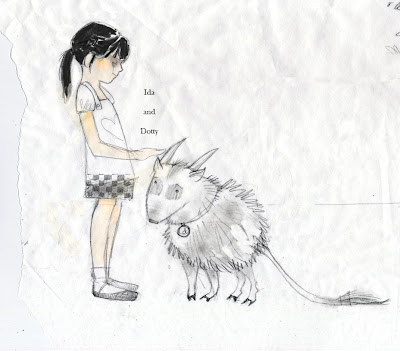
 and slow began to look more like a buffalo
and slow began to look more like a buffalo the more cow like
the more cow like
Other Imaginary friends










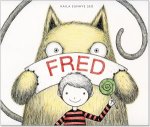


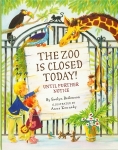


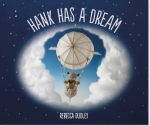
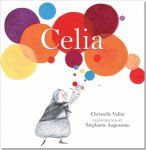
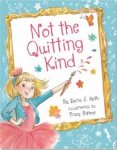












Amazing analysis! You just made the “Diary of a Wimpy Kid” movie into a kind of crypto-”Fight Club.” Chloe as Greg’s Tyler Durden? Brilliant!
By the way, have you read “A Diary of a Nobody” by George and Weedon Grossmith? It’s one of my favorite books — a kind of nineteenth-century middle-aged version “Diary of a Wimpy Kid.” Similar trick with the first-person narrator not realizing how much of his own awfulness he’s inadvertently displaying.
James, I would have given all the money in the world to hear Chloe say to someone, “Hit me as hard as you can.” All the money.
I wonder if Kinney’s book was an unconscious homage to the Grosssmiths’? Certainly I love the idea of a middle aged version of the book. The closest thing I could come up with would be “A Fan’s Notes” and the tone isn’t quite right. Cheers!
[...] 08/18/2010 Filed under: Uncategorized — kimbolee @ 6:51 AM A great post over at A Fuse 8 Production (one of my top 5 blogs) about the mysterious new girl in the Diary of a Wimpy Kid Movie. I’m [...]
I thought greg was too young.
“A Fan’s Notes” is one of my favorites, one of those books I keep urging my friends to read, even buying it for them and putting it in their hands — and nobody reads it. I’m so happy to hear you like it too!
We just watched this too. My boys (11 and were perplexed with the Angie character, too. But, boy, did we laugh at some other parts!
were perplexed with the Angie character, too. But, boy, did we laugh at some other parts!
Matt turned me on to Exley when we first started dating. It’s eerie how closely your reading selection mirrors his, James. I don’t suppose you harbor a secret love for Heinrich Boll’s “The Clown” too, do you?
Unfortunately, you’ve stumped me on Boll. But now I have a new book to read, since our tastes are so congruent — and since Wikipedia says this about the hero of “The Clown”: “Hans has a mystical peculiarity, as he can detect smells through the telephone.”
In return, I recommend Ernest Junger’s “The Glass Bees” and J.K. Huysmans’ “A Rebours.” If you / he have read those too, then my head will officially explode, and I will be forced to declare unprecedented psychic correspondence.
Hmm… you’re kinda right… I may hafta watch it again though.